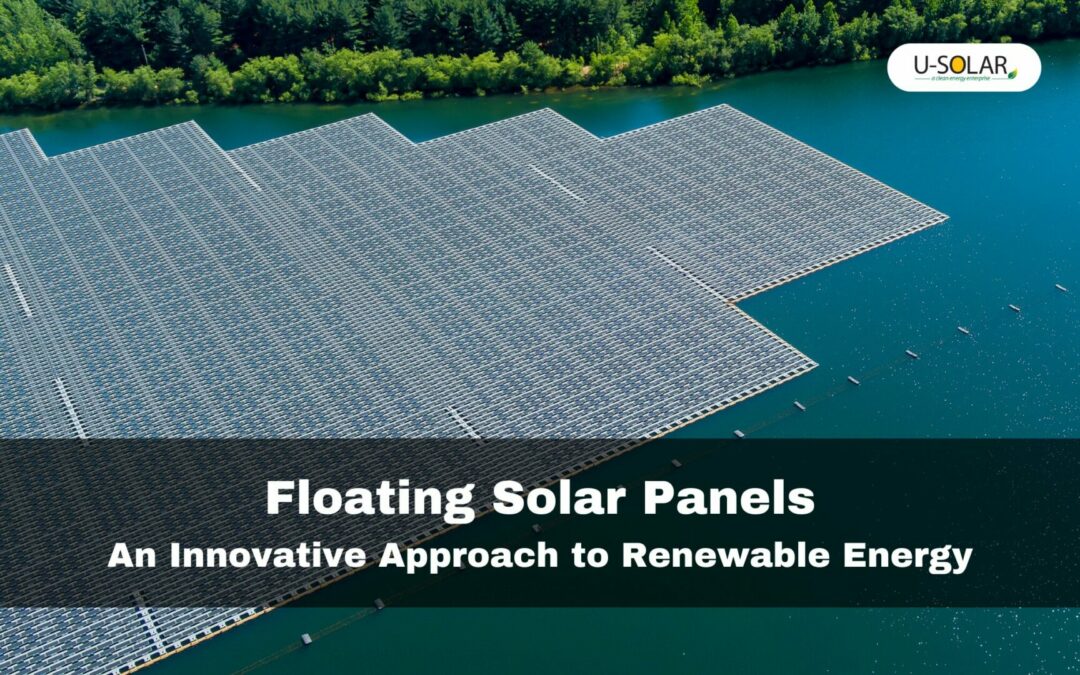As the world races towards achieving a sustainable future, innovative technologies are constantly being developed to harness renewable energy sources more efficiently. One such innovation that has garnered significant attention in recent years is floating solar technology. This blog delves into floating solar’s intricacies, benefits, challenges, and the techniques behind its implementation.
What is Floating Solar?
Floating solar, also known as floating photovoltaic (FPV), involves installing solar panels on bodies of water such as lakes, reservoirs, and ponds. Unlike traditional ground-mounted solar panels, FPV systems are anchored to the waterbed or shoreline, allowing the panels to float on the water’s surface.
The Technique Behind Floating Solar
1. Site Selection and Assessment:
Water Body Suitability: The first step involves selecting a suitable water body. Factors such as water depth, surface area, water quality, and proximity to the grid are considered. Calm water bodies like reservoirs are preferred over turbulent ones like rivers.
Environmental Impact: Assessing the environmental impact is crucial. Ensuring that the installation does not harm local ecosystems or water quality is a priority.
2. Design and Engineering:
Buoyant Structures: FPV systems use buoyant structures made of high-density polyethylene (HDPE) or other durable materials to keep the solar panels afloat. These structures are designed to withstand various water conditions and support the weight of the panels.
Anchoring and Mooring: The floating solar array is anchored to the waterbed or the shore to prevent it from drifting. This involves using cables, anchors, and mooring systems that can withstand environmental forces such as wind and waves.
Electrical Design: Electrical components, including inverters and transformers, are strategically placed either on floating platforms or onshore. Special attention is given to waterproofing and corrosion resistance.
3. Installation and Commissioning:
Assembly: Solar panels and buoyant structures are assembled onshore and then floated onto the water. This modular approach allows for efficient construction and easy scalability.
Electrical Connections: Cables are laid to connect the solar panels to the inverters and the grid. These cables are designed to be water-resistant and durable.
Testing and Monitoring: Before full operation, the system undergoes rigorous testing to ensure all components function correctly. Continuous monitoring systems are installed to track performance and detect any issues.
Benefits of Floating Solar
- Land Conservation: By utilizing water surfaces, FPV systems free up valuable land that can be used for agriculture, habitation, or other purposes.
- Increased Efficiency: Water bodies provide a cooling effect, which can enhance the efficiency of solar panels by preventing overheating. Studies have shown that FPV systems can produce more electricity compared to their land-based counterparts.
- Reduced Water Evaporation: Covering water bodies with solar panels can reduce water evaporation, which is beneficial in regions facing water scarcity.
- Algae Growth Reduction: FPV systems can inhibit the growth of algae by blocking sunlight from penetrating the water, thereby improving water quality.
Q&A
Q1: How does floating solar impact aquatic life?
A: Floating solar panels can benefit aquatic life by reducing algal blooms through their shading effect, which helps maintain healthier oxygen levels and aquatic ecosystems. They also help conserve water by reducing evaporation.
Q2: How to maintain floating solar systems?
A: Maintenance include ensuring the durability of the floating structures, accessing the panels for repairs, and protecting the system from environmental factors such as strong winds and waves. Specialized equipment and procedures are often required for maintenance activities.
Q3: Can floating solar be implemented on any water body?
A: Not all water bodies are suitable for floating solar. Factors such as water depth, surface area, water quality, and environmental impact must be considered. Calm, man-made water bodies like reservoirs are generally preferred over natural and turbulent bodies like rivers.
Q4: What are the cost implications of floating solar compared to traditional solar installations?
A: The initial cost of floating solar installations can be higher due to the specialized materials and engineering required. However, the potential for increased efficiency and land conservation benefits can offset these costs over time.
Conclusion
Floating solar technology represents a promising frontier in renewable energy, offering numerous benefits including land conservation, increased efficiency, and environmental advantages. While challenges exist, ongoing advancements in technology and engineering are making FPV systems more viable and cost-effective. As the demand for clean energy continues to rise, floating solar is poised to play a significant role in the global energy landscape.
Understand your solar potential through U-Solar’s dedicated technical consulting process
Get In Touch

